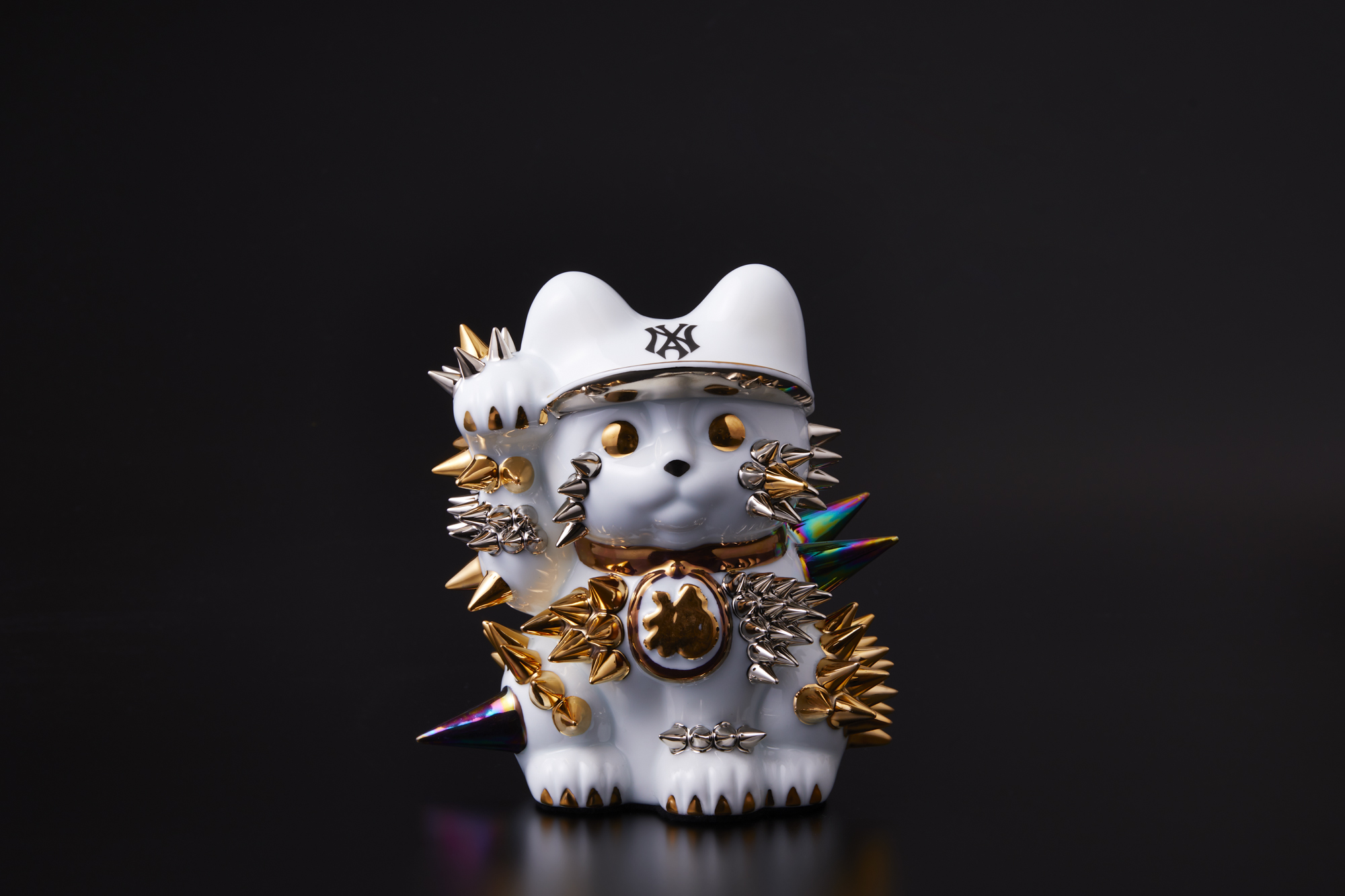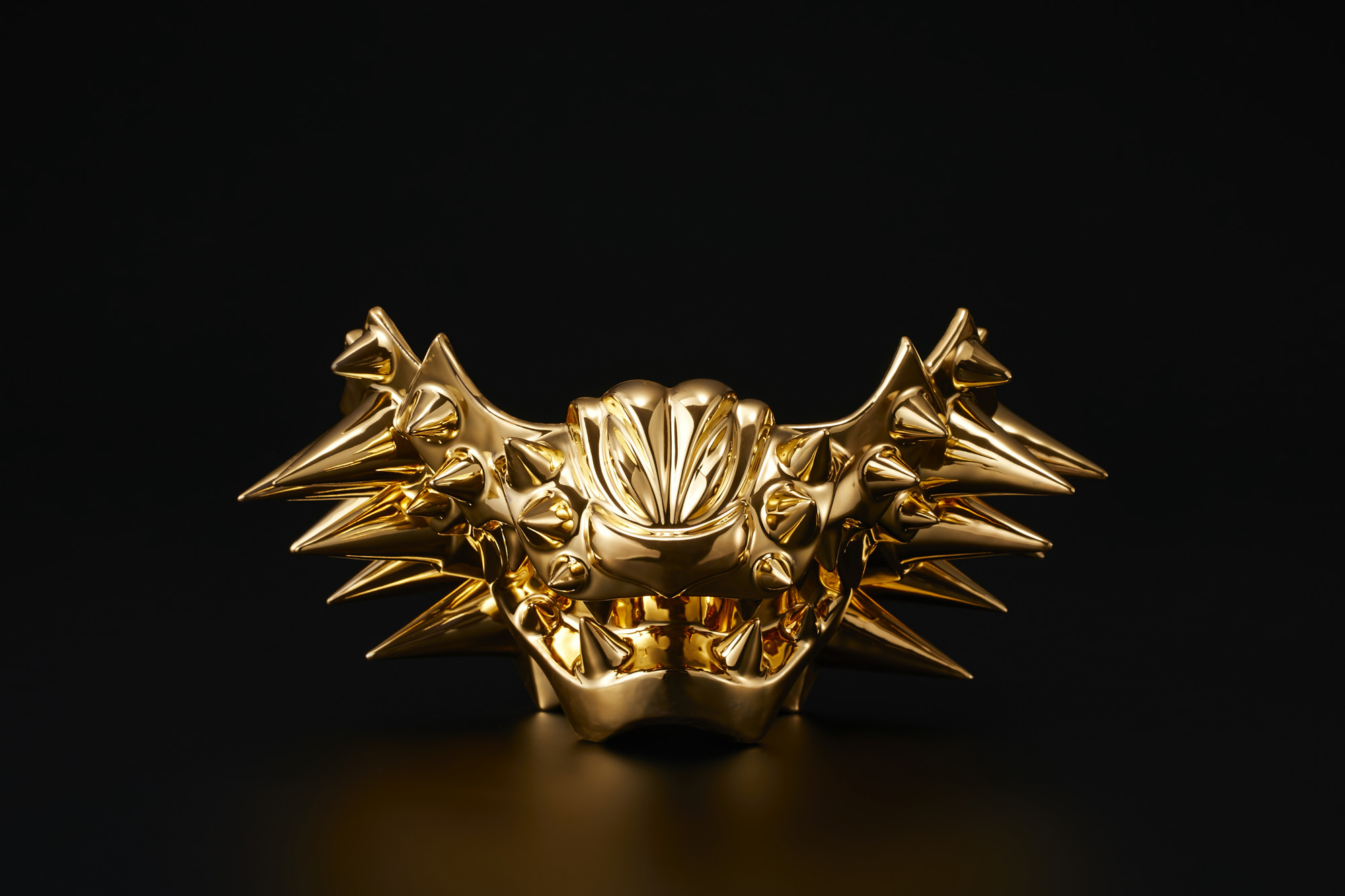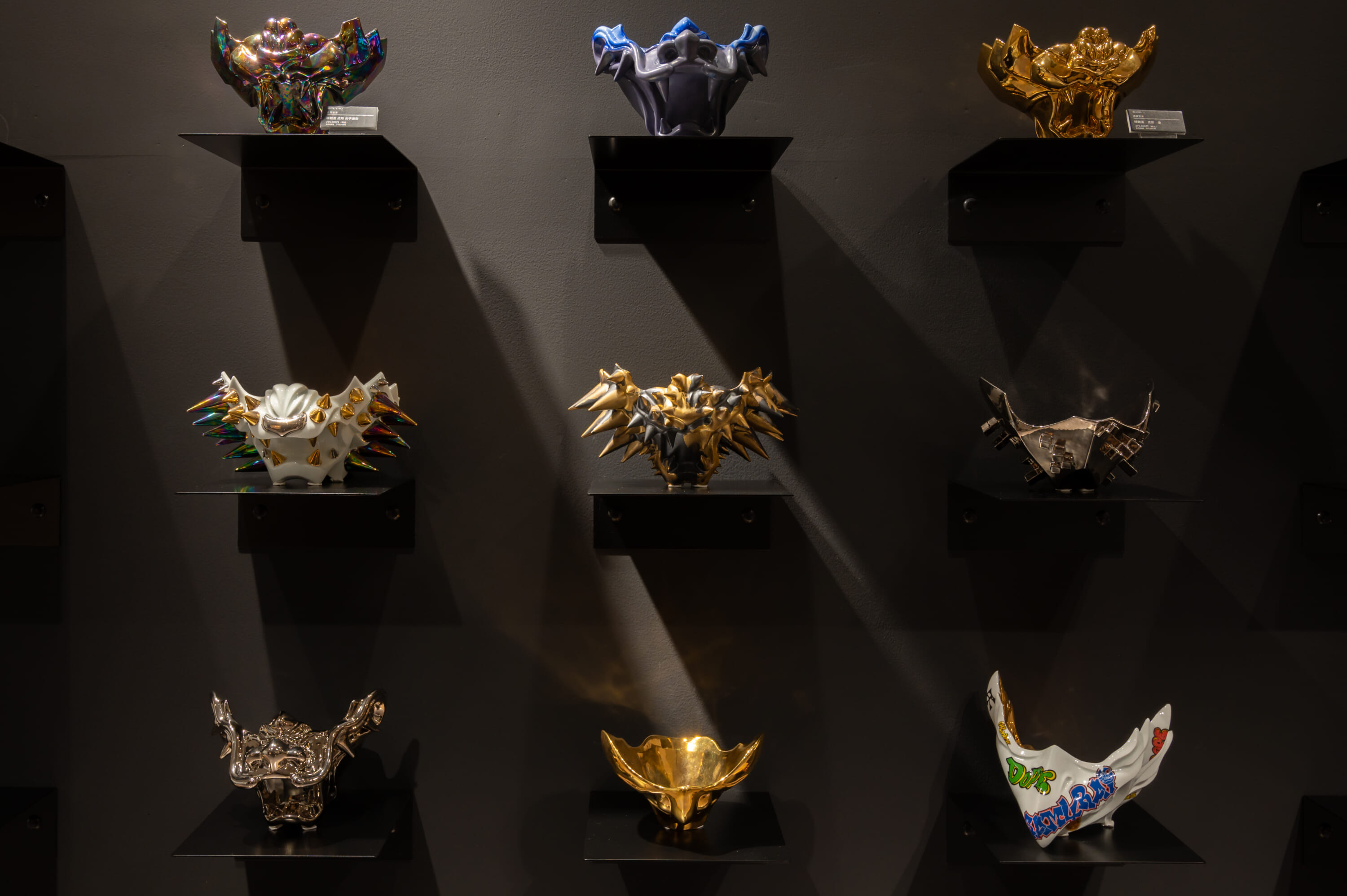Drinking sake at his wedding out of samurai armor masks he made himself, Takahiro Koga is obviously anything but ordinary. Koga creates wearable ceramics, spike-covered manekineko cats and daruma dolls, and, above all, revels in thinking new things into existence. “‘Learn old things; make them new,’ is a Japanese saying, and it’s my motto,” Koga tells TW.
This thirst for innovation spurred him to create NFTs of his works and exhibit them in digital form at a special event in Miyashita Park in 2022, a year after exhibiting physical works there. “No one from the world of pottery and ceramics was doing NFTs at the time,” Koga says, explaining why he was motivated to explore this new world.
The artist’s open-mindedness and curiosity have resulted in collaborations with Adidas and the Tokyo Ghoul anime, to name two standout projects dear to him. Aside from exhibitions and merch campaigns, Koga’s works can be seen at B-Ownd Gallery, which represents him and is located on the 7th floor of Hankyu Men’s in Ginza.
We managed to catch up with Koga in the interval between his wedding and an exhibition in New York to learn more about the artist behind the spiky exterior.
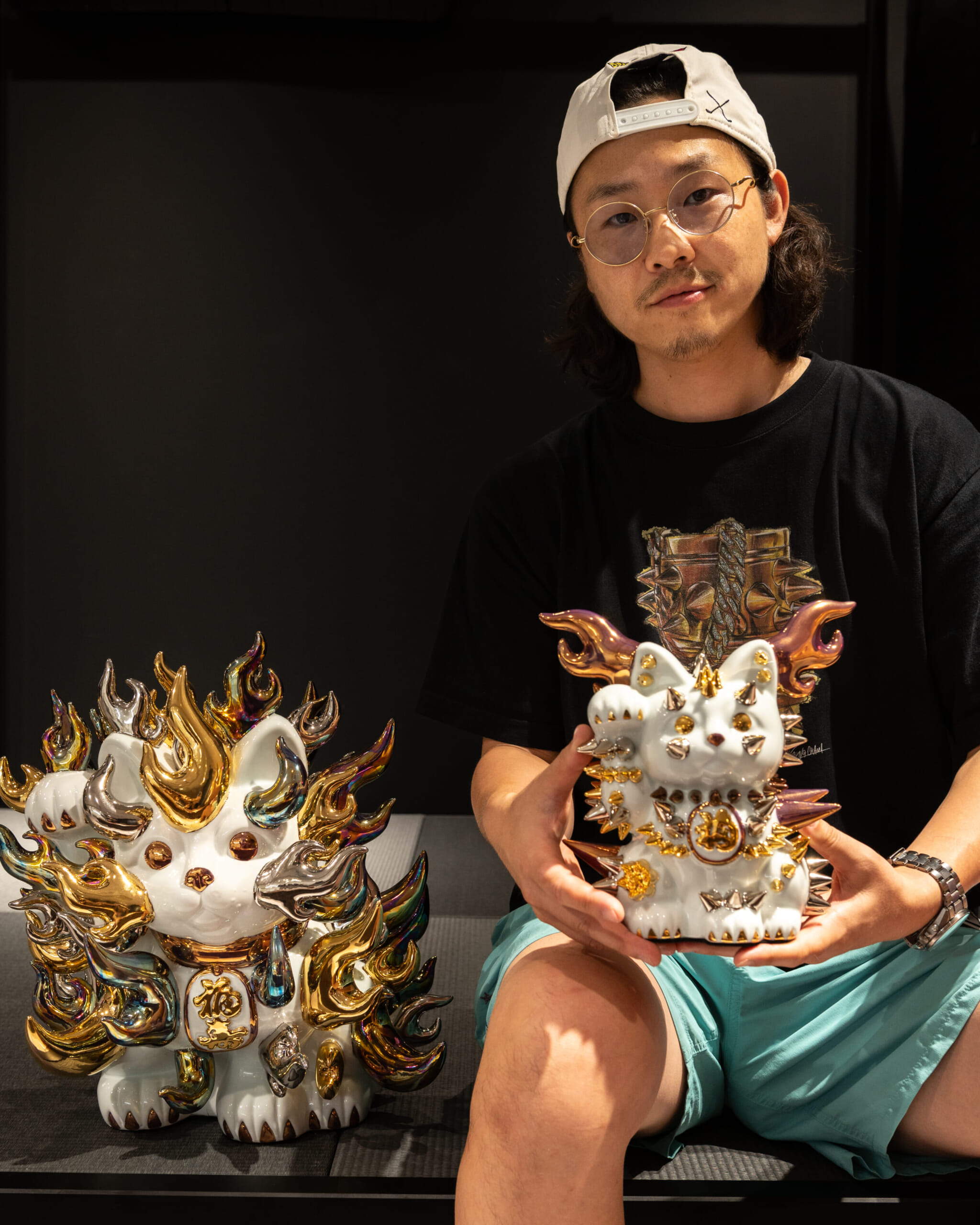
Photo by Lisa Knight
Making and Breaking the Mold
“I got into pottery and ceramics as a member of a university club,” Koga says, adding, “It was a club about teaching art.” Though it might seem very roundabout, after getting interested in pottery from a simple lecture, Koga dove deep into the craft, even changing his major to pottery halfway through his undergraduate studies.
Fukuoka-born and raised, Koga stayed close to home to learn pottery, and rightly so. The island of Kyushu is home to several iconic styles of Japanese pottery, including the Karatsu and Arita styles, both from Saga Prefecture. This is where Koga went to hone his craft and play with the two styles. The former is known for its rough, earthy texture and color while the latter is the total opposite, a bright, shiny and smooth porcelain. To this day, Koga uses raw materials from Arita for his work, which he does in his studio in Fukuoka and occasionally in his studio in Kagoshima Prefecture. He remains based in Kyushu, strongly believing in preserving local culture and expression in the face of the steady depopulation of Japan’s countryside.
Like a true craftsman, Koga’s touch permeates every step of production, from mixing the clay to firing his kiln and spray-painting some pieces. He thoughtfully utilizes centuries-old traditions and know-how as a base for his daring additions, merging everything into a wonderful juxtaposition.
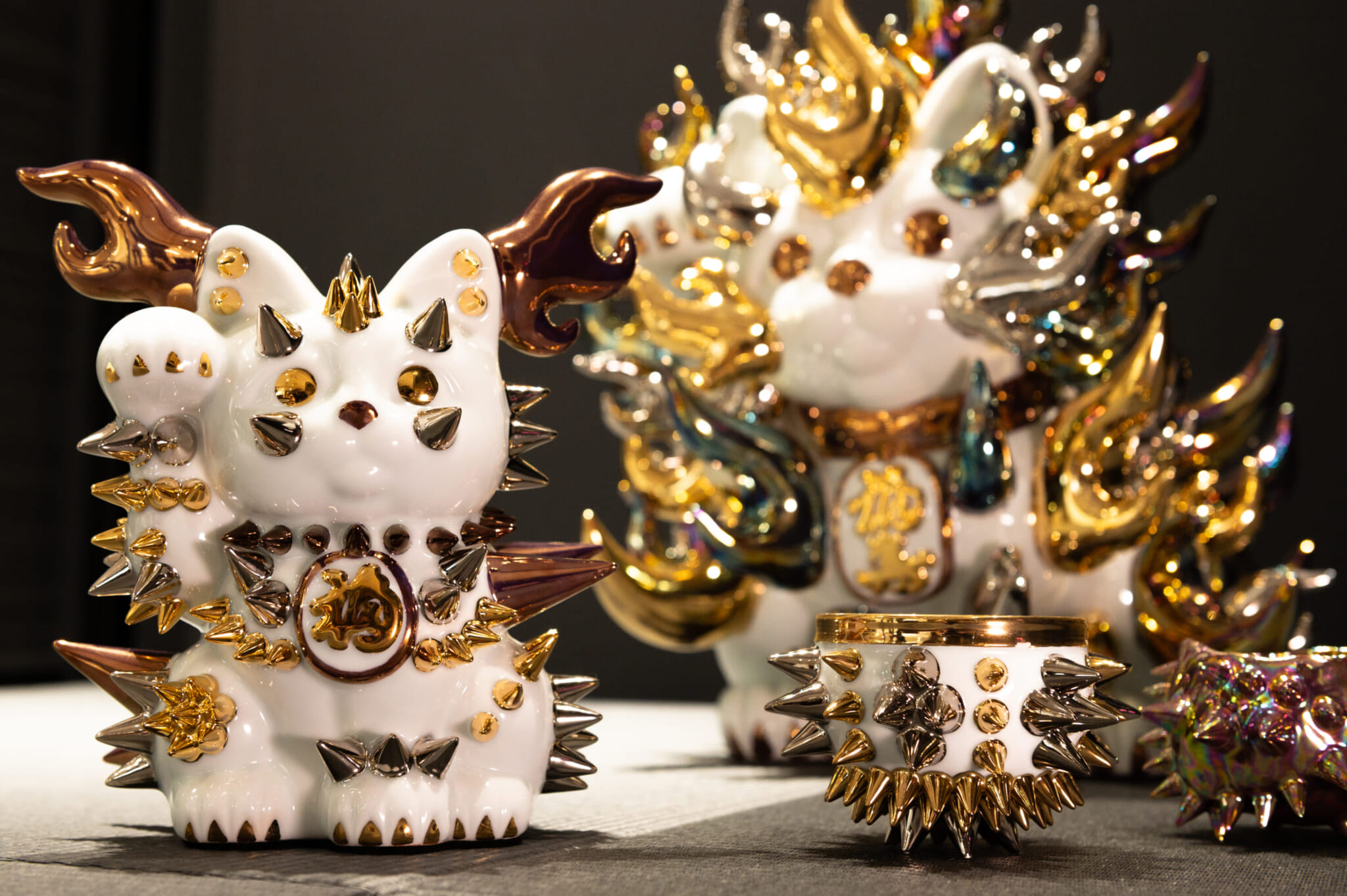
Photo by Lisa Knight
Anti Wabi-Sabi
All of Koga’s works start with a traditional object but turn into what one would imagine a punk samurai would love. “Neo Manekineko” and “Neo Daruma” are the strongest examples of how the artist “spikes” his works. Though Koga is not opposed to the punk and rock ’n’ roll comparisons, this was never his intention.
“I love the resistance of the youth; it’s very impactful. That’s also represented by the studs and spikes,” Koga says. “But I wasn’t inspired by fashion or music for these works.”
Koga’s inspiration lies firmly in Japanese history and “anti wabi-sabi,” a notion he came up with. He contrasts his pursuit of making objects stand out with efforts others have made to create objects that are deliberately toned down to showcase their contents. By way of explanation, he cites the wabi-sabi philosophy of Sen no Rikyu, a tea master who favored dark, unassuming tea bowls in order to make the tea itself the most prominent element of tea ceremonies.
Sen no Rikyu is one of Koga’s favorite artists. “I think of him as the world’s first art director,” Koga tells me, and he means it. His anti wabi-sabi is not an opposition but rather an addition. He shares with us that he is planning to create a tea ceremony collection next, but it remains to be seen whether he will stay anti wabi-sabi or swing closer to the established chado aesthetics.
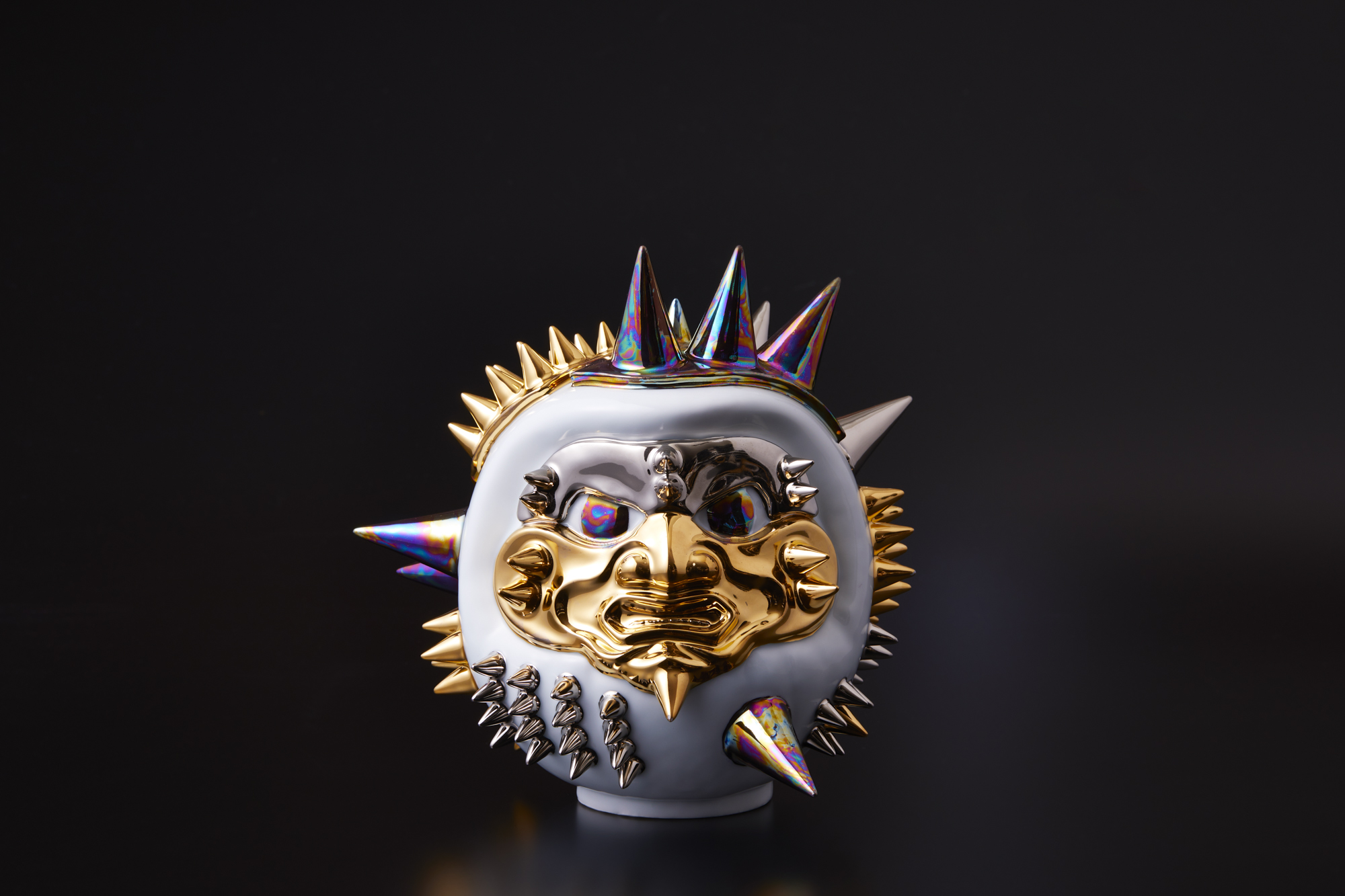
The artist’s other source of inspiration is history, in particular, the Jomon period (circa 10,000–300 BCE) and the Sengoku period or Warring States period (1467–1568).
“Did you know that there are many objects from the Jomon period covered in copper studs?” Koga says and goes on to describe bowls used for ceremonial and religious purposes in this period in ancient Japan, underlining that the power of these objects is not only physical but also spiritual. He is interested in bringing out the strength in ceramic objects, often viewed as easily breakable. “I felt that studs and spikes were a great way to show this power of objects,” he explains.
Power and history are most obviously encapsulated in one of his best-received series of works: “Ho Yoroi Hai” (cheek armor cup). Created in the shape of a part of the samurai armor that was historically designed to be practical, beautiful and terrifying, these pieces are a rare example of wearable ceramics that double as sake cups. “When sipping sake from this unique vessel, one takes on the appearance of donning this armor,” Koga writes in the artist statement for this series.
From Japan to the World
Koga has been actively exhibiting his works for a decade now, mostly in Japan but also in Italy, the U.S. and Hong Kong among other locations. He’s refreshingly honest about the art world, going as far as describing some of his exhibitions as failures. “I was young, excited to exhibit, but didn’t really understand the process. The exhibitions weren’t promoted enough, and I also wasn’t able to communicate well in English for those abroad,” he says. It’s not said in a morose way but instead comes from a place of learning from mistakes and improving.
Koga goes on to contrast his past efforts with his upcoming exhibition in SoHo, New York, at the NowHere Gallery. With this event coordinated by B-Ownd Gallery, Koga feels more supported and hopeful than ever. This is the first major exhibition of his piggy bank objects, the first time he takes a step out of Japanese history and culture for inspiration. Koga wants to reach out to the world again and again, and dreams of exhibiting at Art Miami or Art Basel. “Perhaps even in the middle of Times Square! Is that even possible?” he wonders.
Above all, Koga wants to meet people and have them see his art, which he considers to be in the unbroken artistic tradition of Japan. “I love Japan,” he exclaims. “We have so many great things — culture which we have kept and evolved to this point — and I want to show the world that.
“I live in this age, and I want to express good things through art,” Koga says, before concluding, “Art’s power is infinite.”
More Info
Discover more of Koga’s creations on his website and Instagram.
This article was originally published in the TW November-December 2023 issue

